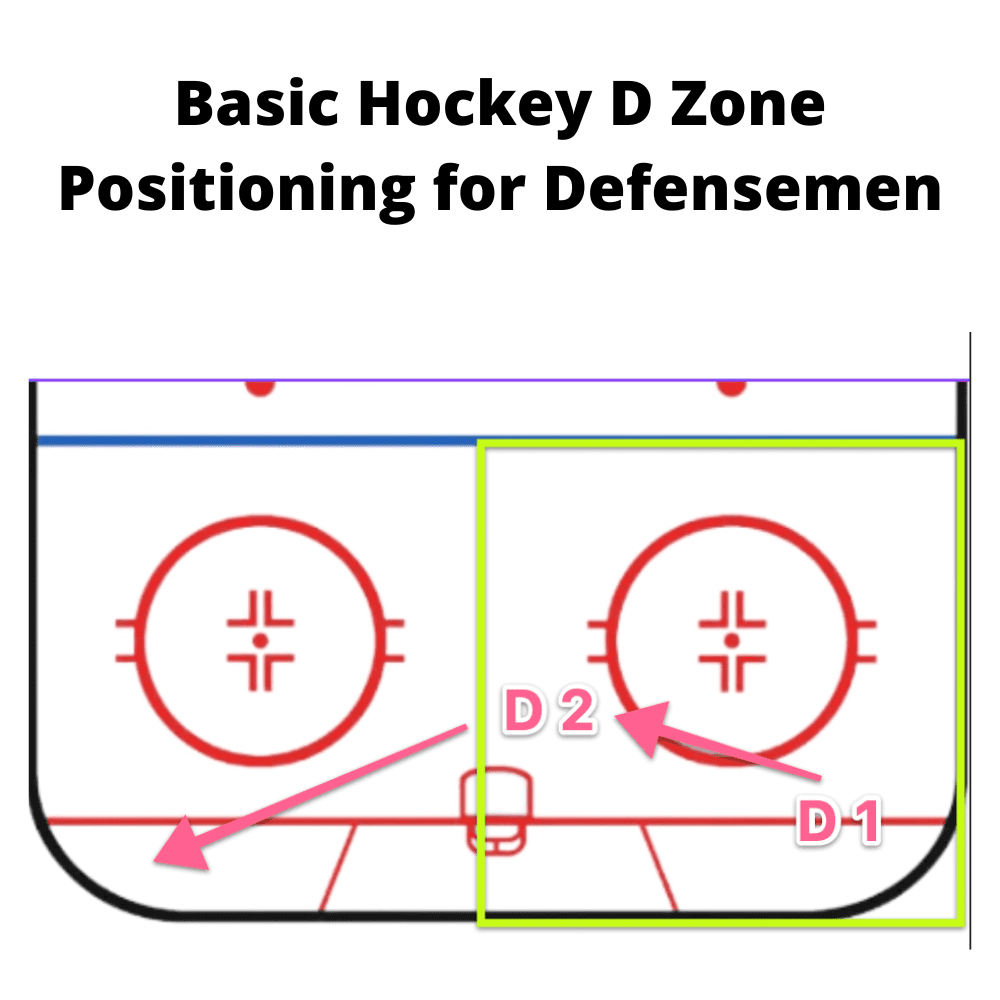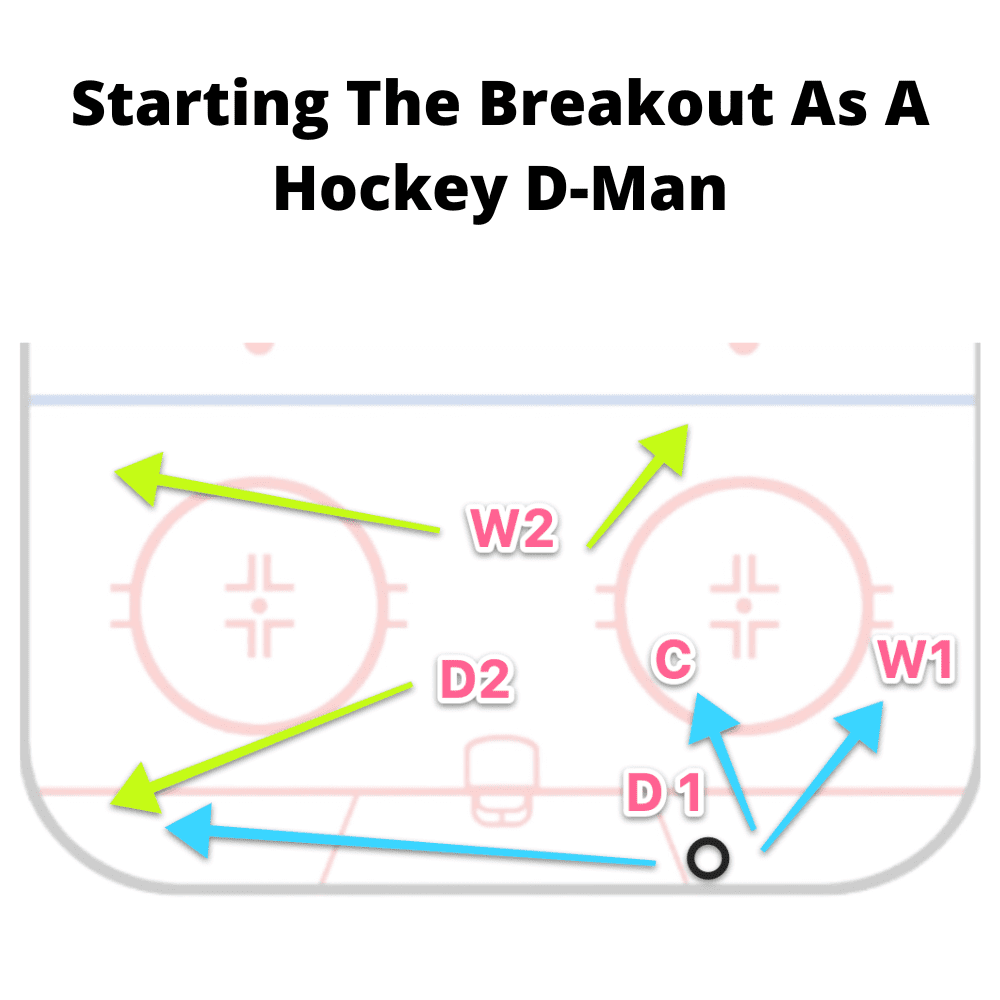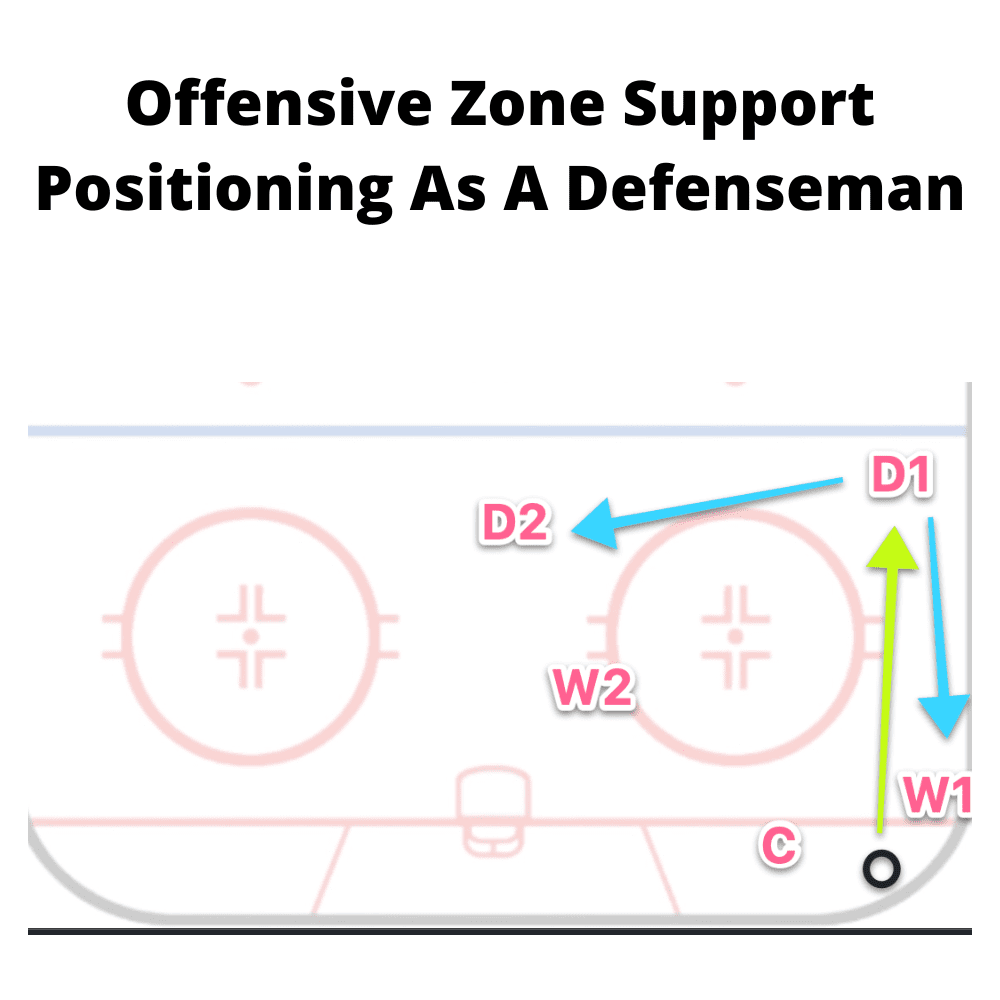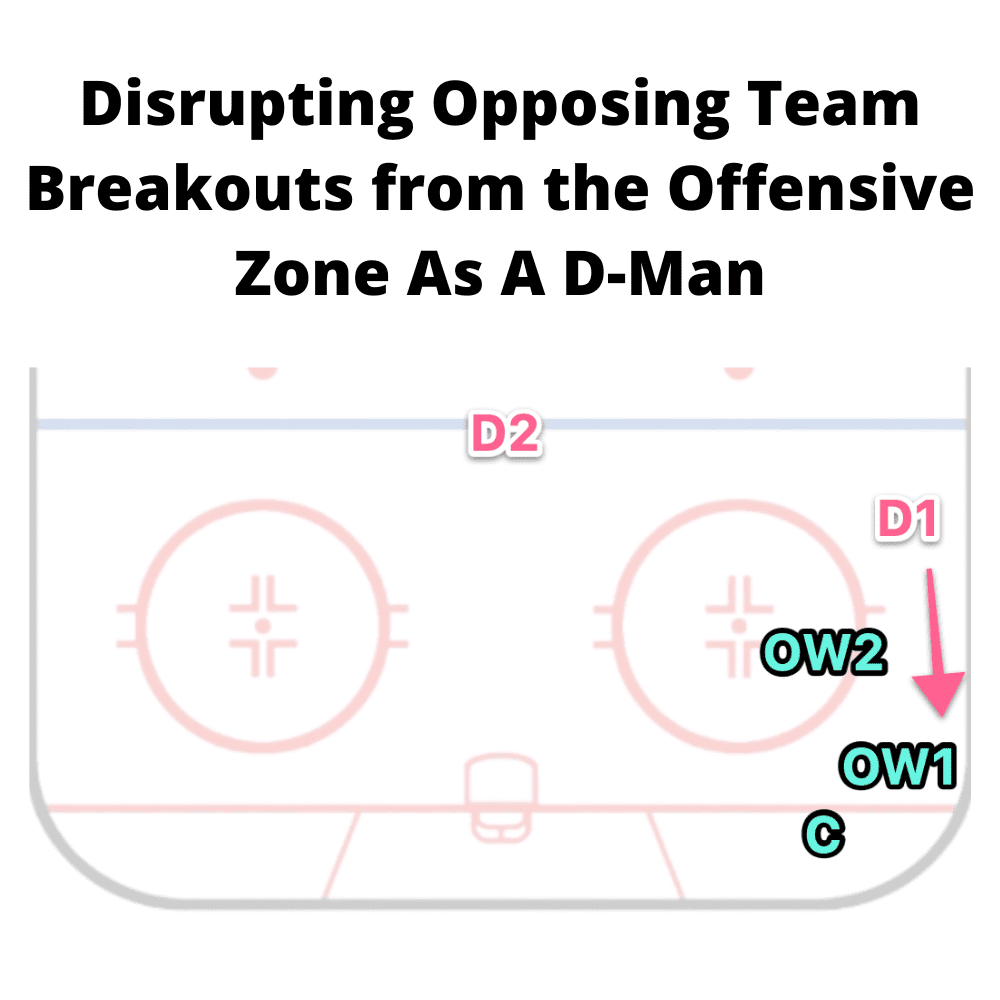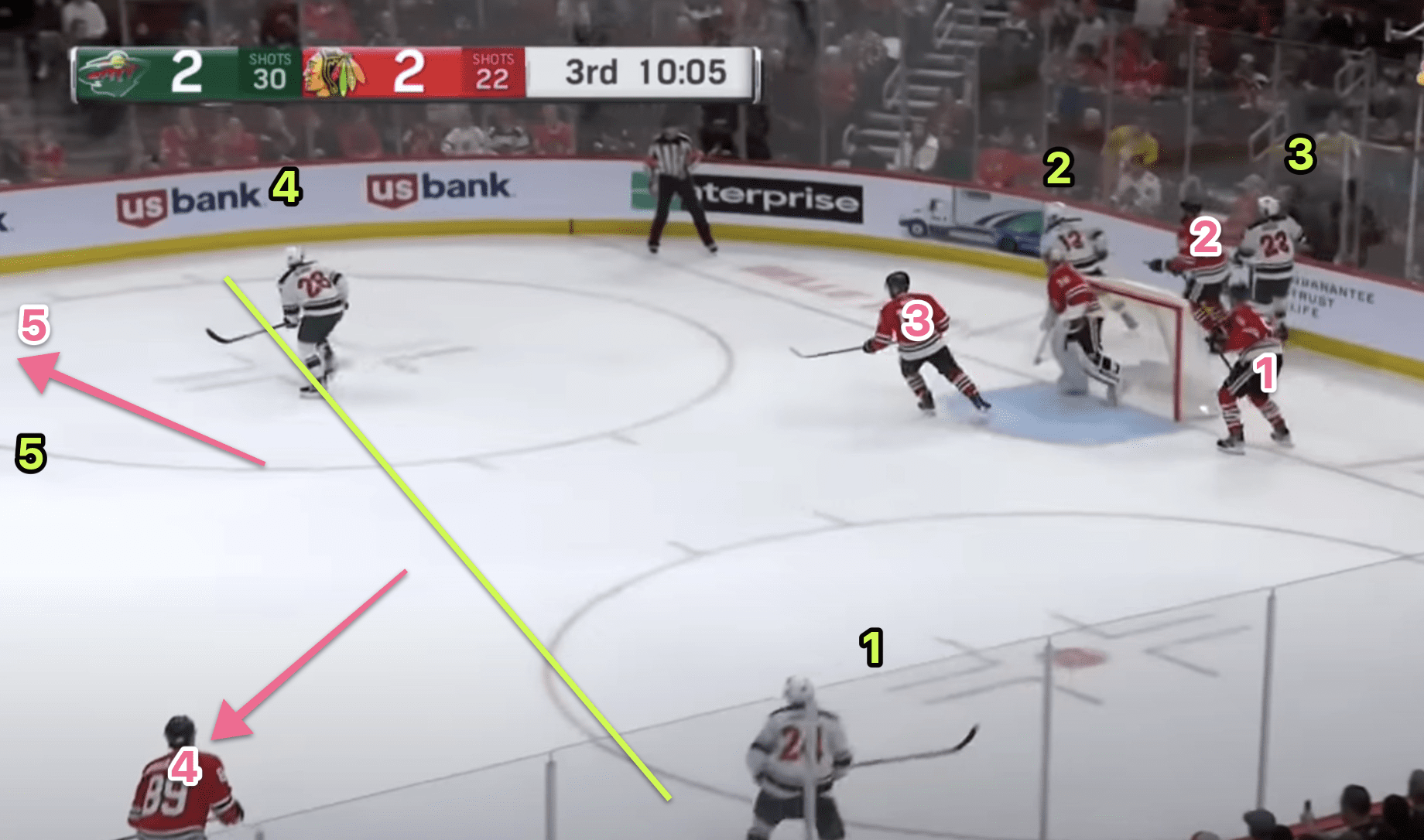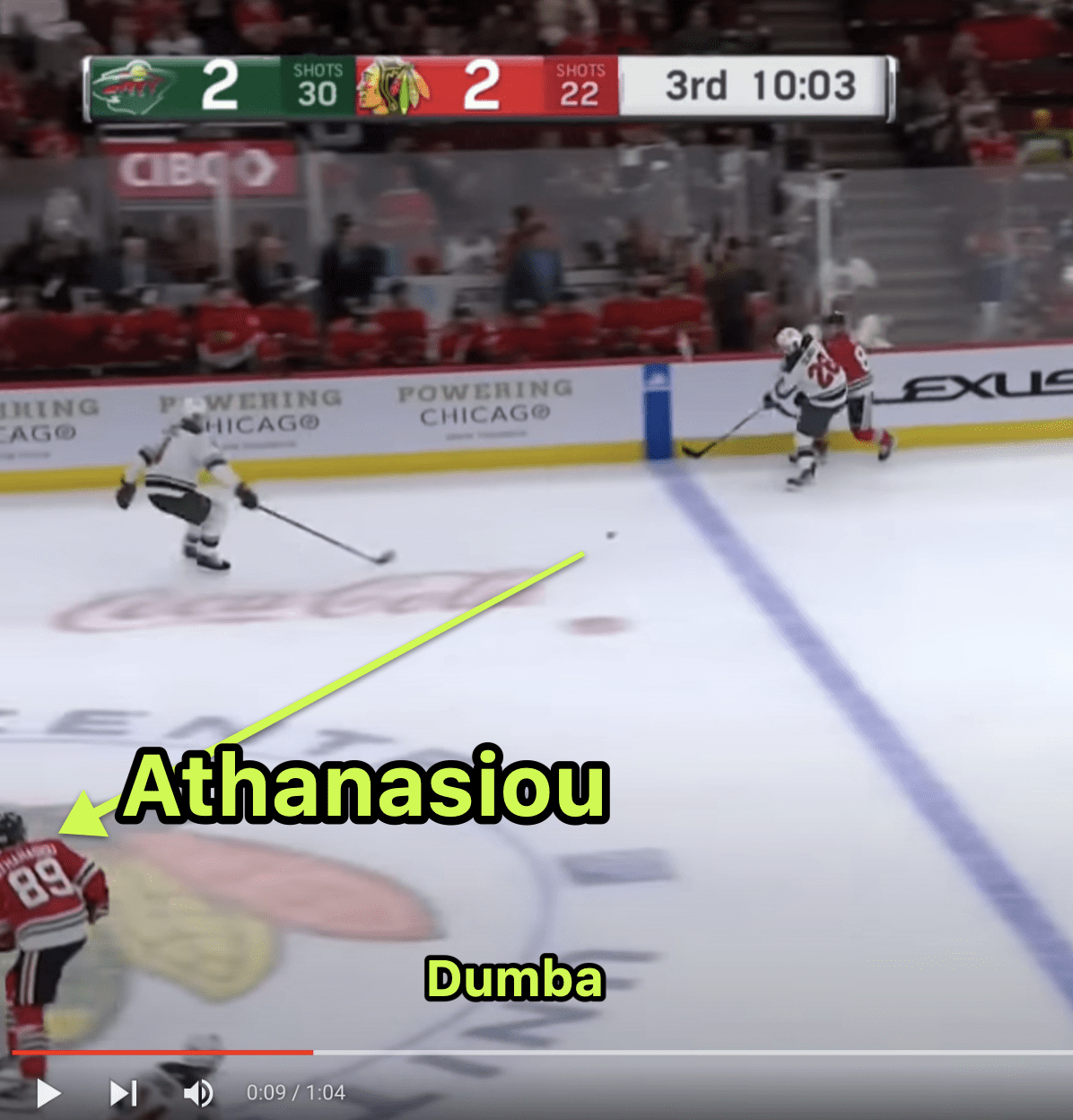In hockey, defensemen are highly important to a teams success. The best defensemen are exceptionally great at preventing scoring opportunities in the defensive zone, as well as creating offensive attacks through a defensive zone breakout.
The games top defensive players are adept in their overall hockey IQ, minimize risk through smart decision making, and create opportunities for their team through breakout and breakout prevention.
Most Important Responsibilities for Hockey Defensemen
The top priority for defensemen in hockey is to prevent scoring opportunities in the defensive zone. Hence, the position title “Defense”. These are the top priorities for the hockey defense position:
- Prevent Scoring Opportunities
- Maintain Proper Defensive Zone Positioning
- Offensive Zone Support Positioning
- Breakout Support Specialists
- Quarterbacking The Ice
- Disrupting Opposing Team Breakouts
- Power Play Direction
Prevent Scoring Opportunities
In the defensive zone, the number one priority for a hockey d-man is to prevent scoring opportunities. As play moves throughout the defensive zone, defensemen should reduce scoring risk while immediately capitalizing on the chance for a breakout. The number one way to prevent scoring opportunities for a hockey d-man is by maintaining good defensive zone positioning.
Additionally, a great defenseman will be able to quickly take a loose puck and make a smart decision to begin a defensive zone breakout.
Maintain Proper Defensive Zone Positioning
The biggest key to preventing scoring opportunities as a defenseman in hockey is by understanding defensive zone positioning. In the defensive zone, defensemen typically move in two basic positions. These positions are the corners and front of the net.
From these two positions, defensemen are able to both prevent scoring opportunities while capitalizing on any opportunity for a breakout. Defensemen should maintain a high level of situational awareness so that they do not become out of position while in the defensive zone. Basic offensive zone strategy for most hockey teams dictates that the play will be taking place on 50% of the ice. Depending on which half of the ice the puck is on, defensemen will move from the corner to the front of the net.
Getting out of position as a d man in hockey means chasing puck carriers into the wrong corners, or “up the wall” where it would be more efficient for forwards or their defensive partner to take over. When this happens, gaps in the defensive zone are created and smart players / teams capitalize by moving the puck to unprotected areas for scoring opportunities.
Breakout Support Specialists
Once a loose puck has been captured in the defensive zone, through either a forced or unforced error on the opposing team, defensemen will begin the breakout. The games to defensive players are adept in both their puck handling and decision making.
In the graphic below, the defenseman has captured the puck below the goal line. When this happens, the three most common next steps are:
- Pass to near wing
- Pass to near wing supporting center
- Reverse play by sending puck to net front defenseman (who moves to opposite corner).
The forth option, which is where many defensive players in hockey break down and ruin a breakout opportunity is in holding the puck. From the moment a d-man picks up the loose puck in the defensive zone, the opposing team is attacking this player with a minimum of one player. Defensemen should be able to quickly make a decision, getting the puck to an open space filled by one of their teammates.
While holding onto the puck for to long can create negative situations in the defensive zone, players with high hockey intelligence also understand patience with the puck. If option 1, 2, or 3 is not immediately available, holding the puck can create breakdowns from the forechecking zone. A breakdown by a forechecking team creates opportunities to re-create the breakout. This often happens when a defenseman moves the puck to an open space in their own zone.
Offensive Zone Support Positioning
Once their team has successfully broken the puck out of their own zone and shifted the strategy to forechecking, defensemen should reduce risk of breakouts while creating scoring opportunities for their team.
One of the most common strategies for an offensive team in hockey is to move the puck to the center of the ice for a shot from the slot area. In the offensive zone, defensemen are responsible for 50% of the ice, while maintaining their position near the blue line in the event of an opposing team breakout.
In the graphic below, we’re looking at a typical offensive zone play situation. The puck is in the corner, with two supporting players from their team on the puck. Forwards, when given the opportunity, know that by moving the puck to the blue line they can create a hole in the d-zone for the other team. Hockey defensemen should be able to quickly make a decision that further exposes this open ice by moving the puck from “d to d”, or to a supporting player on the “back door”. In this situation, the defenseman also has the opportunity to take a shot his/her self.
If the opportunity is not immediately available for Option A or B, smart d-men will move the puck back to a safe zone with support, either the near or far corner of the offensive zone. Great offensive zone defensemen should posses a thorough understanding of open, yet supported spaces that reduce the risk of puck turnovers.
Quarterbacking The Ice
As a defenseman, you have the opportunity to see the ice better in the offensive zone. As a result, there are many situations where, through proper offensive zone positioning, you will be able to move yourself or another player into position for a scoring opportunity. This is achieved through great situational awareness and communication with other players. Defensemen should have the confidence and authority to direct play in the offensive zone through communication with their defensive partner and forwards.
Vice versa, in the defensive zone, d-men should communicate with their goalie (who has the best view of developing play) and supporting forwards to quickly orchestrate a successful breakout when given the opportunity.
Disrupting Opposing Team Breakouts
When an offensive zone turnover happens, defensemen must quickly make one of two decisions:
- “Pinch” to create an additional turnover and continued offensive zone play
- Retreat into the neutral ice area to start playing defense
Like any decision in hockey, it must be made quickly and with confidence. The best defensemen do not simply make decisions quickly, they have an understanding of the developing play around them and make judgement based off of this. Countless scoring opportunities and odd man rushes are created for opposing teams through poor decisions from defensemen in their offensive zone.
Knowing the situation around you and making the well timed choice to “pinch” can create serious problems for opposing team breakouts. A bad timed “pinch” and subsequent opposing team breakout often creates the 2-1 or 3-1 situation that goalies dread.
Power Play Direction
The power play is the single best time for a team to score in hockey, because the opposing team is less one player. This is also one of the best chances for a defenseman to score, because their offensive zone responsibilities have shifted. Instead of focus on preventing an opposing team breakout, the defenseman should switch their focus to maximizing any open ice opportunity for a scoring chance.
What Scouts Look For In Hockey Defensemen
Scouts do not simply look for the top scoring offensive defensemen when they’re looking to build their team. Some of the games most well respected and best defensive players are also the lowest scoring. Scouts look for these things in hockey defensemen:
- Situational Awareness
- Decisive Decision Making
- Spatial Awareness
- Skating Ability
- Transition Knowledge
- Limiting and Capitalizing on Risk
- Puck Play Ability
Situational Awareness
Ever gone to a game and not noticed a defenseman on the other team throughout the game? Similar to goalies, being un-noticed is often a good thing. This means, the ability to reduce mistakes, especially those that result in an opposing teams goal. There are tens of thousands of athletically elite defensemen in the world. There are not tens of thousands of athletically elite defensemen with similar situational awareness.
This is why, at the NHL level, there is a mix of high scoring defensive players, and some that rarely score. One of the top things scouts look for in a defensive player is their risk mitigation through situational awareness.
Decisive Decision Making
In their own zone, defensemen have a minimum of one opposing team within feet of them at nearly all times. Often times, there are two or more. D-men should be able to make quick decisions that reduce the risk of opportunity for an opposing team. This is accomplished through situational awareness and attention to developing play. On any d-zone turnover, there is a fleeting opportunity to flip from defense to the breakout attack. It is this quick decision making that separates an elite defensive player from one who is simply great.
Spatial Awareness
When it comes to spatial awareness, defensemen should have an understanding of who is around them at all times. This should dictate their decision making, knowing when to force play in the corner of their own zone or while on the attack. Once instance where spatial and situational awareness is exposed from defensemen in hockey is bad pinching decisions made in the offensive zone.
Skating Ability
Skating ability, like in great goalies, is really a moot point for elite defensemen. You should be one of, if not the best, skaters on the team. Becoming an explosive skater means the difference in split seconds of opportunity all over the playing surface. Really, there are great skating defensemen everywhere. Scouts look for defensemen who possess the entire package of athleticism and awareness, which makes all the difference in wins and losses throughout the hockey season.
Transition Knowledge
The single most common point of failure for a defenseman is at their offensive zone blue line. This is where bad decision making leads to odd man rushes for the opposing team, which far too often results in a goal. Great defensemen need to know how to properly transition from offense to defense and vice versa.
Limiting and Capitalizing on Risk
A polarizing defenseman at the NHL level is Matt Dumba. Dumba is known as an offensive defenseman. This is his play style and he owns it, however as a result, there are certain times where to much focus on offense creates a turnover situation for his team.
In this clip, Dumba is seen playing very aggressively in the offensive zone. The Blackhawks get possession of the puck, which quickly leads to a breakout through the neutral zone. While Dumba does recover quickly, he has to cover for defensive partner Jon Merrill, shifting his positioning to the opposite side of the ice.. which leads to a goal. In this case, there is a slight moment of hesitation in the offensive zone before he quickly retreats to regain his position. In this moment, he is now behind the play, resulting in rushed decisions into his own defensive zone.
As you can see, what goes from the good decision to put a second player on the puck once his teammate in front of the net falls, quickly turns sour through a slight moment of hesitation after he chips the puck back behind the Hawks net.
While Dumba does catch up, from the moment he moves the puck behind the Hawks net to the pass that Andreas Athanasiou catches near center ice, he is skating backwards. At this point, the risk of an odd man rush far outweighs the advantage his offensive positioning could create. Dumba needs to recognize the developing play sooner, so he can be on top of Athanasiou should the far board puck battle be lost by the Wild.
As we can see from the clip, the battle is lost and now his defensive partner Merrill is behind the play.
This next image shows the puck battle lost and Athanasiou in position for what is now a breakaway. Had Dumba made the choice to support his offensive zone attack and transition immediately to a defensive position, he could’ve been in place to disrupt this pass or even stop the developing situation all together. Instead, he is still physically behind Athanasiou and skating backwards.
Now, due to sheer athletic ability, Dumba does catch up. He’s bottled up by Athanasiou’s puck handling skills and the Hawks score. At every level below the NHL, defensive players get away with situations just like this. In the NHL, however, it is about making sure this doesn’t happen in the first place. Dumba should’ve been looking at Athanasiou skating towards him, not trying to catch him skating into his own defensive zone.
Puck Play Ability
Notice how this isn’t the top priority for a scout on our list? This is because, like athleticism, puck play is a commodity. An elite defenseman is also elite at shooting and handling the puck.
When you enter the offensive zone as a defenseman, you had better have a great shot if you’re looking to play at the next level. You must be able to stick handle as well as anybody on the team and passes must be precisely on target.
Related Content: How To Prepare for a Hockey Game
Tips For Improving Your Play As A Hockey Defenseman
If you are immediately looking to become a better defenseman in hockey, these are some of the top things you can do to improve your game:
- Situational Puck Shooting Drills
- Improve Stick-handling In Tight Spaces
- Improve Your Hockey IQ Through Shoulder Checks
- Achieve Higher Levels of Physical Strength
- Communicate, Communicate, Communicate
Situational Puck Shooting Drills
There are so many elite puck shooting defensemen in the world that developing a hard shot is simply not enough. Often times, a shooting opportunity is created as a result of a successful pinch by a d-man. In this case, the window to shoot is limited. It is also a highly pressurized situation with opposing team members attacking the defensemen. At this point, separation can be created by knowing how to shoot from an off-balanced position.
Defensemen should be adept at changing their release, shooting without looking at the puck, and at shooting with a purpose. There are countless drills a player can do to improve their release and ability to shoot from any situation.
Improve Stick-handling In Tight Spaces
There is a stark difference in puck control with no pressure, versus puck control with pressure. The best defensemen are elite at controlling the puck in very tight situations. This skill is developed through countless hours of stick handing from a balanced and unbalanced position.
Improve Your Hockey IQ Through Shoulder Checks
In goaltending, the shoulder check is one of the single best things that can be done to observe developing play. Defensemen should practice approaching the puck, while also taking time to look around them. Now, there are many situations where there simply is not time. In that case, you should have saw the play developing and known what you wanted to do with the puck ahead of time. If you don’t have time, welcome to the club.
In practice, force yourself to look around when approaching a puck. Force yourself to look away from the puck and quickly back to better understand the situation happening in front of you in practice and it will carry over to games.
Achieve Higher Levels of Physical Strength
Off ice training transfers directly to success on the ice. If you want to improve as a hockey defenseman, you should train off the ice. There are countless strength training apps, coaches, and videos that will help you become a better athlete. If you cannot dedicate time to improving your game off the ice, how can you expect to become better on it?
Communicate, Communicate, Communicate
If you want to be a great defenseman, you should be a great communicator. You should communicate all the time, in every situation. This will help those around you be better prepared, giving you more time to make smart choices with the puck once it lands on your stick. Communication is critical to success on the ice and unfortunately, there are far too many players who refuse to do it.

